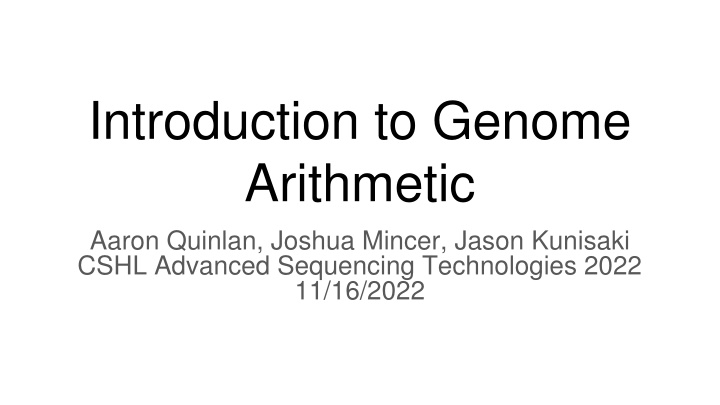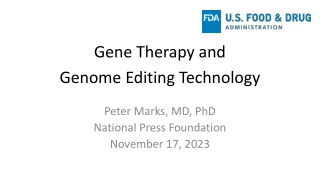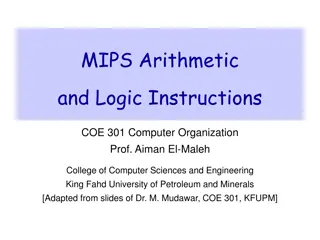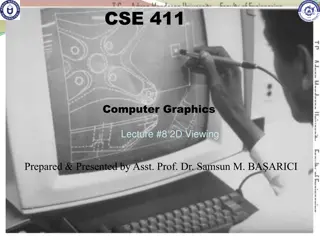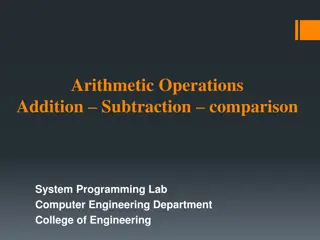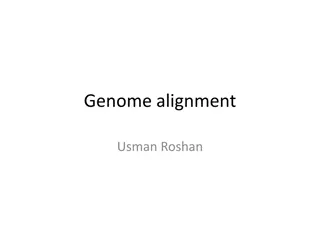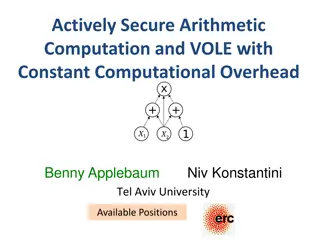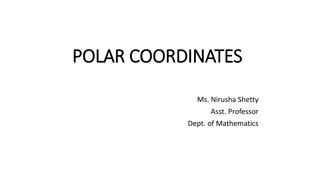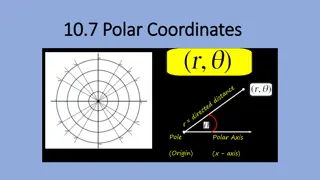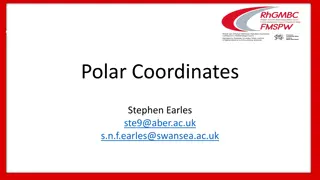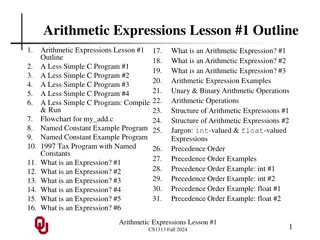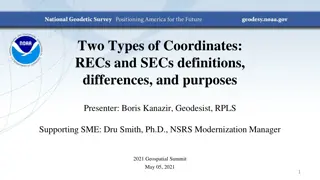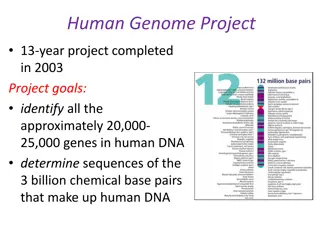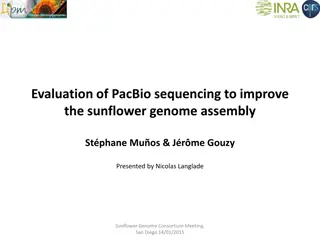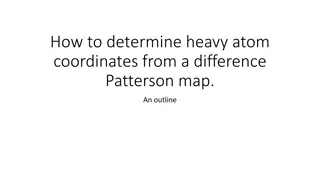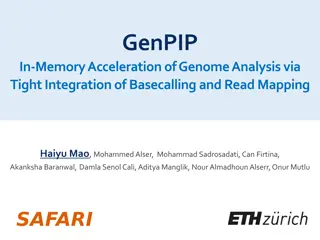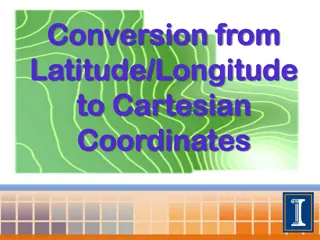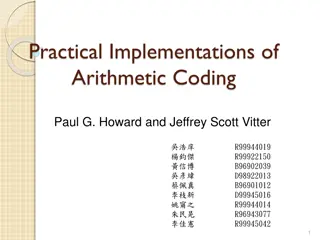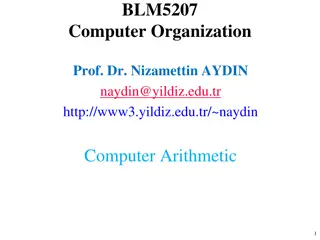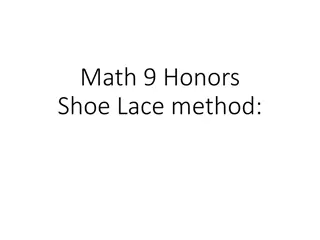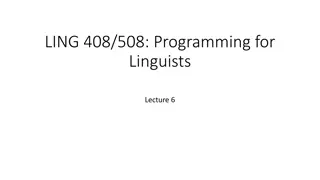Introduction to Genome Arithmetic and Coordinates
In this presentation, delve into the realm of genome arithmetic and coordinates through insightful discussions on reference genomes, functional consequences of variants, and designing sequencing panels. Explore the significance of genome coordinates in identifying specific locations within a reference genome and understand the distinctions between 1-based and 0-based numbering systems. Discover how genome arithmetic is utilized in analyzing genetic information and designing targeted sequencing panels.
Download Presentation

Please find below an Image/Link to download the presentation.
The content on the website is provided AS IS for your information and personal use only. It may not be sold, licensed, or shared on other websites without obtaining consent from the author.If you encounter any issues during the download, it is possible that the publisher has removed the file from their server.
You are allowed to download the files provided on this website for personal or commercial use, subject to the condition that they are used lawfully. All files are the property of their respective owners.
The content on the website is provided AS IS for your information and personal use only. It may not be sold, licensed, or shared on other websites without obtaining consent from the author.
E N D
Presentation Transcript
Introduction to Genome Arithmetic Aaron Quinlan, Joshua Mincer, Jason Kunisaki CSHL Advanced Sequencing Technologies 2022 11/16/2022
Genome coordinates are essential Identifying exact variant position Determining functional consequence of a variant Variant in a functional domain? Tumor vs normal comparisons Rare in the population? Designing a targeted sequencing panel
Learning Objectives A T G C T G A T G C A T C G Chromosome 10 G A T A C C C G T A G T T T Chromosome 11 C G T C G A G C A C T A C G Chromosome 12 What are genome coordinates and how are they used? How to incorporate intervals to analyze specific regions of the genome Concepts in genome arithmetic bedtools High level strategy to generate a targeted sequencing panel Figures adapted from Obi Griffith s biostars tutorial and Aaron Quinlan s bedtools tutorial
Genome coordinates identify a specific location of interest in the reference genome World coordinates: 41.8781 N, 87,6298 W Chicago A T G C T G A T G C A T C G Chromosome 10 Genome coordinates: chr10 Start: 8 End: 10 chr10:8-10 Genome coordinates: Chromosome: chr10 Start: 3 End: 3 chr10:3-3
1-based system numbers nucleotides in a sequence A T G C T G A T G C A T C G Chromosome 10 1 2 3 4 5 6 7 8 9 10 11 12 13 14 1-based position: Genome coordinates (1-based): Chromosome: chr10 Start: 3 End: 3 chr10:3-3
0-based system numbers between nucleotides A T G C T G A T G C A T C G Chromosome 10 1 2 3 4 5 6 7 8 9 10 11 12 13 14 1-based position: 14 0 1 2 3 4 5 6 7 8 9 10 11 12 13 0-based position: Genome coordinates (1-based): Chromosome: chr10 Start: 3 End: 3 chr10:3-3 Genome coordinates (0-based): Chromosome: chr10 Start: 2 End: 3 chr10:2-3
Practice exercises in 0 and 1 base coordinates A T G C T G A T G C A T C G Chromosome 10 1 2 3 4 5 6 7 8 9 10 11 12 13 14 1-based position: 14 0 1 2 3 4 5 6 7 8 9 10 11 12 13 0-based position: Exercise 1: specify genome coordinates for the T allele in red 1-based position = ? 0-based position = ? Exercise 2: specify genome coordinates for the ATCG sequence in blue 1-based position = ? 0-based position = ?
Add example R and python code to go through this A T G C A G C T A G C T A C G DNA Sequence = 1-based position: 1 2 3 4 5 6 7 8 9 10 11 12 13 14 15 15 0-based position: 14 0 1 2 3 4 5 6 7 8 9 10 11 12 13 5 minute exercise: using R (google substr ) and python, answer the following questions where DNA_seq = ATGCAGCTAGCTAGC: Identify the 5thnucleotide in the sequence Identify the sequence of the 8-14thnucleotides
Rs 1-index system is similar to 1-based coordinates A T G C A G C T A G C T A C G DNA Sequence = 1-based position: 1 2 3 4 5 6 7 8 9 10 11 12 13 14 15 0-based position: 0 1 2 3 4 5 6 7 8 9 10 11 12 13 14 15
Pythons 0-index system is analogous to 0-base coordinates A T G C A G C T A G C T A C G DNA Sequence = Index (R): 1 2 3 4 5 6 7 8 9 10 11 12 13 14 15 0 1 2 3 4 5 6 7 8 9 10 11 12 13 14 Index (python): 0-based position: 0 1 2 3 4 5 6 7 8 9 10 11 12 13 14 15
Defining 1-based variant coordinates TAGC A T G C T G A T G C A T C G A T G C A G A T G -- Reference chr10 A T C G Tumor chr10 1 2 3 4 5 6 7 8 9 10 11 12 13 14 1-based position: 14 0 1 2 3 4 5 6 7 8 9 10 11 12 13 0-based position: Variant Genomic Coordinate Ref>Alt Variant Coordinate 0 or 1-based Single nucleotide variant chr10:5-5 T>A chr10:5-5 T/A 1 based Deletion (C deleted) chr10:10-10 DEL chr10:10-10 C/- 1 based Insertion (TAGC inserted) chr10:13-14 INS chr10:13-14 -/TAGC 1 based
Defining 0-based variant coordinates TAGC A T G C T G A T G C A T C G A T G C A G A T G -- Reference chr10 A T C G Tumor chr10 1 2 3 4 5 6 7 8 9 10 11 12 13 14 1-based position: 14 0 1 2 3 4 5 6 7 8 9 10 11 12 13 0-based position: Variant Genomic Coordinate Ref>Alt Variant Coordinate 0 or 1-based Single nucleotide variant chr10:4-5 T>A chr10:4-5 T/A 0 based Deletion (C deleted) chr10:9-10 DEL chr10:9-10 C/- 0 based Insertion (TAGC inserted) chr10:13-13 INS chr10:13-13 -/TAGC 0 based
Why does 0-based or 1-based matter? Widely used genomic file formats use different coordinate systems Consistent reference to nucleotides is critical for reproducible research Aaron will go through different file formats in the next session 0-based 1-based BAM (alignments) SAM (alignments) BED (start position only) BED (end position only) IGV (the file type - *.igv) IGV (the viewer) VCF (variants) GFF (genomic features) UCSC Genome Browser
Lets use IGV to visualize the fun of 0 and 1-based coordinates We will look at exons in FGFR3 with the UCSC Genome Browser Genome browser > tools > table browser > specify track > download https://training.incf.org/lesson/how-do-i-get-coordinates-and-sequences-exons-using-ucsc- genome-browser Step 1: Download genomic coordinates for exons (BED file) Make a new folder on your Desktop called bedtools mkdir ~/Desktop/bedtools Step 2: Open IGV and look at FGFR3 Step 3: Copy and paste coordinates directly from BED file into IGV Step 4: Load BED file into IGV
Case study of genome arithmetic: designing a custom sequencing panel Overall goal: identify informative genomic intervals in coding regions for sequencing and subsequent mutation analysis Things to account for: Tissue-specific isoforms Isoform-specific: Exons Functional domains Sites of known mutation hotspots Verify intervals included in sequencing panel using IGV
Designing sequencing panel is the first step for targeted sequencing
Merge: combine overlapping intervals Capture all coding exons across all isoforms Final Interval
Merge: combine overlapping intervals Capture all coding regions across isoforms #1 and #2 Final Interval #1 Final Interval #2
How would we do this in R/python?? Copy and paste the R code from slack into Rstudio What if we could do this in one single line with three words: `bedtools merge [file]`
Intersection: identify and isolate overlapping features Identify exons harboring informative variants (1+ variant must be in the exon) then merge across all isoforms
Intersection: identify and isolate overlapping features Identify any exons in individual isoforms without informative variants (no variant can be in the exon at any position)
Intersection: identify portions of exons from any isoform without informative variants and overlaps with a functional domain (functional domain cannot harbor informative variant)
Complement: identify intervals not covered by genomic features Get non-functional domain regions across all isoforms (if any isoform has a FD, exclude)
